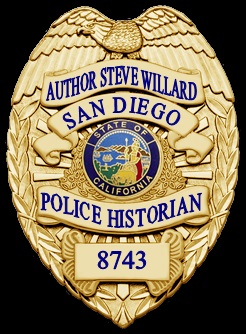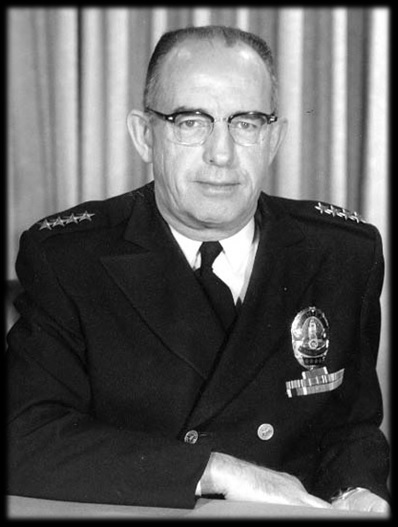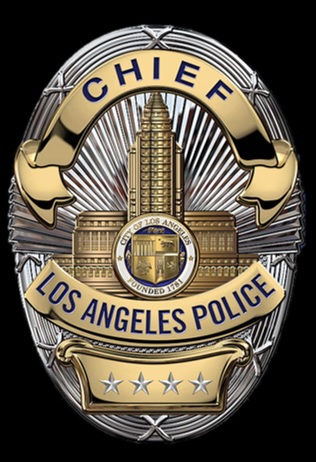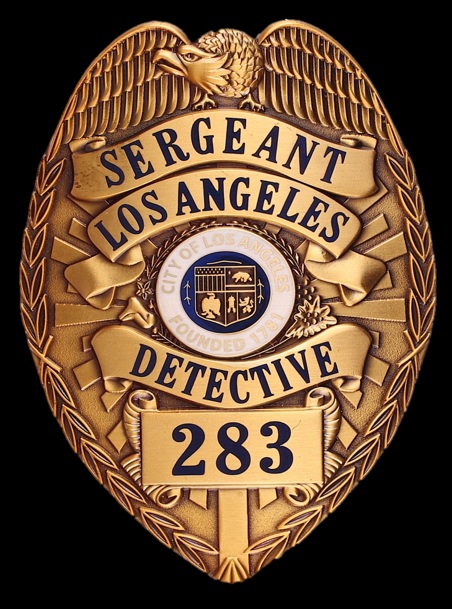


In the annals of American law enforcement, Bill Parker's a giant. Even today, more than a half century since his death, every LAPD officer, from the newest recruit to the most seasoned veteran, is aware of his name and the legacy he forged.
He was born William Henry Parker III. Amongst his closest friends, "Whiskey Bill" often sufficed. From 1950 until his on duty death in 1966, he was known within the Los Angeles Police Department simply as "Chief."
Parker joined the LAPD in 1927 and quickly climbed the ranks. By 1940 he was a traffic division captain. The fact a halfway honest man could survive in the LAPD in that time period was amazing. The fact he made rank so fast, and untarnished, spoke to his extraordinary political skills.
To understand the political climate, in the 1930's and 40's, the LAPD was generally considered one of the most corrupt departments in the US. Mob owned gambling ships sat offshore and the mayor, Frank Shaw, was among the most corrupt city officials in America.
Even the average LA resident was part of the problem.
With more than 7000 "juice badges" in the hands of the public - all available for a donation to Chief James Edgar Davis - well connected citizens carried badges that allowed them to flout the law. The proliferation would ultimately lead to the 1940 introduction of the now famous Series VI LAPD shield which was quickly copyrighted and is still worn today.
The January 1938 bombing of former San Diego police Chief Harry Raymond - who threatened to bring down the house with evidence of the corruption between the mob, city hall and the LAPD - ultimately lead to the firing of the chief and recall of the mayor. It was a turning point but there was still a lot of work needed.
Parker left the LAPD in 1943 to fight in World War II. He received a Purple Heart after being wounded during the Normandy invasion and an Italian Star. He resumed with the LAPD in 1945.
A late 1940's scandal involving 114 Hollywood “pleasure girls” set the stage for Parker's accession to the top and he now had a mandate of cleaning up the ranks once and for all.
Parker took office on August 9, 1950, having been groomed for the position by the Interim Chief William A. Worton, a two star USMC general. In time, Parker would became, in the words of Los Angeles Times publisher Norman Chandler, “the most powerful man in Los Angeles.”
Parker felt his most critical task was purging the city and the LAPD of corruption. To do so, Parker believed LAPD had to be isolated from City Hall politics. But he also needed to cultivate a sense of discipline and esprit de corps. His model was the U.S. Marine Corps. But even the Semper Fi traditions of the Devil Dogs were not enough. Parker's goal was to create a mystique of an efficient, clean and corruption free crime fighting machine. In short, he not only wanted the LAPD to be the best police department in the world, he wanted the world to know it.
A military model, with clear lines of command and emphasis on appearance and discipline, helped create a new sense of order internally. It was a natural fit for the men Parker commanded, almost all of whom were veterans of World War II and Korea.
But Parker also was an ideologue. A devout Roman Catholic, he was dismayed by what he saw as American society's slide into decadence and depravity. Parker came to see the LAPD as a moral force - "the thin blue line" that separated civilization from chaos.
While the "thin blue line" ideology was quickly accepted by LAPD subordinates, a public embrace would need a completely different style of delivery.
Enter Dragnet. Originally broadcast as a radio show in 1949, the straight talking, squeaky clean Sergeant Joe Friday moved onto the television screen in 1951. It was the perfect advertising for a reinvented police force and it gave Parker a voice to defend his department and belittle its critics.
Parker quickly grasped how Dragnet's popularity could burnish the LAPD's image so he supplied the show's producers with case files that put the department in the best possible light. Nothing captured Parker's technocratic ideal more than the famous Dragnet line, "Just the facts, ma'am."
Parker also took to the lecture circuit at rotary clubs and other civic groups to spread the message of the new LAPD. While Parker was an engaging speaker, it didn't hurt that his main speech writer was Sergeant Eugene Roddenberry who later created one of the most successful television franchises in history- Star Trek. It's said Roddenberry modeled the coldly cerebral Mr. Spock after Bill Parker.
The death knell of corruption within the ranks came with a strict enforcement of civil service. Now, test scores were everything and Parker only promoted the most qualified to help lead the department in the direction he wanted.
To keep a lid on organized crime, which had long sought a west coast foothold, Parker assigned two officers to meet gangsters at LAX and escort them to a private room at the airport.
According to former Chief Daryl Gates, the gangsters were "gently persuaded" to leave town and never return.
In 1955 Parker coined the motto,"To Protect and to Serve" and placed it on the marked police cars. It' s still in use today.
As the 1950's ended, Parker was fully in control of the LAPD and, with full civil service protection, widely considered the most powerful police chief in the country.
Best-selling author Joseph Wambaugh graduated the 12 week LAPD academy in 1960. He recalls Parker delivering a fire and brimstone speech at the commencement ceremony telling recruits corruption would not be tolerated - "If you are corrupt, you will go to prison without doubt and without mercy."
Like many West Coast departments, LAPD has never been heavily staffed when it comes to the officer per thousand ratio. To make sure the LAPD was most effective in fighting crime, Parker created a powerful planning and research staff that embraced statistics and deployed officers to high-crime neighborhoods.
Despite his success, the LAPD model was not without its critics.
Mayor Sam Yorty, who took office in 1961 with a pledge to integrate the LAPD, made a habit of running down Parker's leadership -specifically Parker's racism.
Parker made it clear he was not against hiring or promoting black officers - he just thought they should work only with other blacks and only in black neighborhoods.
One black officer Parker promoted - Tom Bradley - left the LAPD in 1961 following a 20 year career. He resumed his public service as the four term mayor of Los Angeles. His 1973 election made him only the second African American mayor of a major U.S. city.
Mayor Yorty was highly critical of LAPD race relations in South Central Los Angeles. Much of that criticism ended when LAPD officers discovered Yorty's niece was renting rooms to black prostitutes near the LA coliseum. Thereafter, Yorty dismissed the racial activists by saying the people in South Central, "complain too much."
Parker perhaps found at least a partial vindication of his racist apocalyptic views when riots broke out in Watts in August 1965. In Parker's eyes, the riots confirmed anarchy was just around the corner.
The media portrayed the riots as fanned by racial tensions. To the cops on the street - many riding three or more to a car and still powerless to dissuade rampant looting and pillaging - the event was more of an opportunity for some residents to join in a free-for-all rather than making a civil rights statement.
Sergeant Ben Dunn recalled, "The streets of Watts resembled an all-out war zone in some far-off foreign country. It bore no resemblance to the United States of America." Finally, martial law was declared and curfew was enforced by National Guardsmen who put a cordon around a vast region of South Central.
The final tally of destruction for the Watts riots would be 34 dead and $40 million in damage as almost 1,000 buildings were damaged or destroyed. Homes were not attacked, although some caught fire due to proximity to other fires.
Parker later publicly described the rioters as, "Monkeys in the zoo." He then issued a warning to LA residents, "It's estimated by 1970, 45 percent of metropolitan LA will be Negro. If you want a protection and family in the future, you're going to have to support a strong police department. If you don't, come 1970, God help you."
Bill Parker died of a heart attack on July 16, 1966, shortly after delivering a speech to a civic group. His successor, Thad Brown, had been Parkers right hand man and assumed the job as interim chief until another Parker protégé, Thomas Reddin was officially appointed.
As chief, Reddin allowed his name to be used for the introduction of a television show called "Adam-12" and a resurrection of Dragnet.
Even with Parker long gone, Joseph Wambaugh recalls Adam-12/Dragnet producer Jack Webb having an almost airtight control over the Hollywood's portrayal of the LAPD. Wambaugh said even into the 1970's scripts about the LAPD had to be reviewed by Jack Webb before they were authorized by the chief.
Due to a ten year term limit, and the elimination of civil service protection imposed in the 1990's, Parker's sixteen years as chief is a record that will never be broken. His legacy lives on however - a new police administration building dedicated on October 9, 2009, will forever be known as "the new Parker Center."






The proliferation of LAPD "Juice Badges" led to the now world famous Series VI oval.